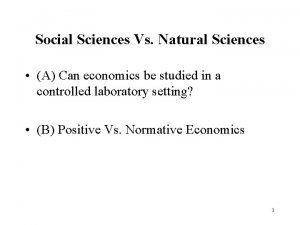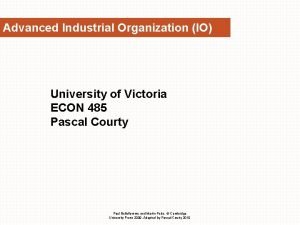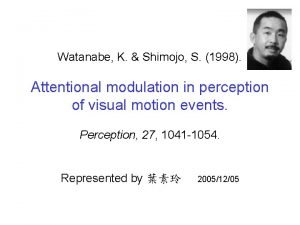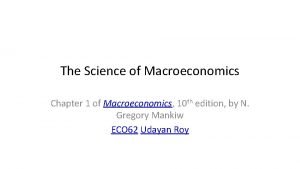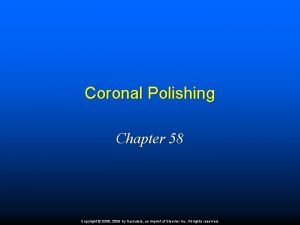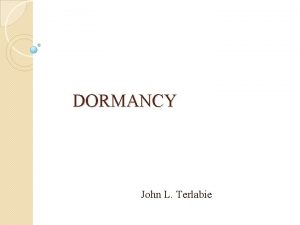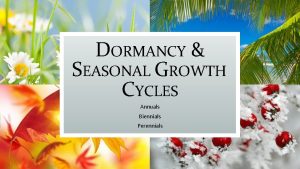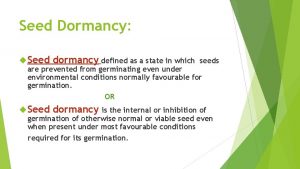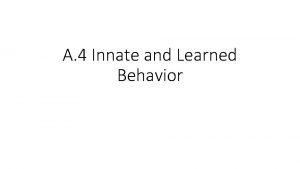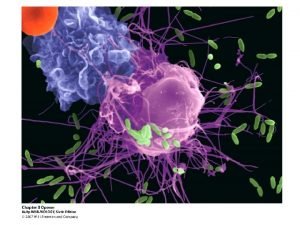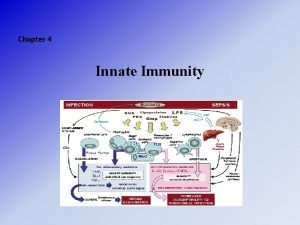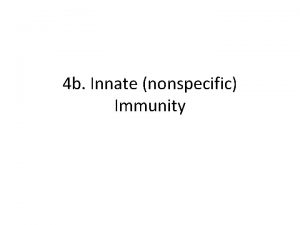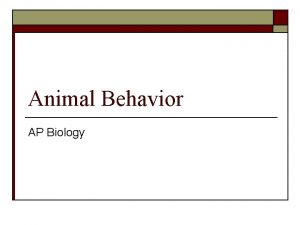Endogenous Dormancy DORMANCY True dormancy or innate dormancy










- Slides: 10

Endogenous Dormancy DORMANCY: “True dormancy or innate dormancy is caused by conditions within the seed that prevent germination under normally ideal conditions. ” Seed dormancy is divided into two major categories. Exogenous dormancy Endogenous dormancy ENDOGENOUS DORMANCY: “Endogenous dormancy is caused by the conditions within the embryo itself and it is also often broken down into three major subgroups. ”

Continue. . 1. Physiological dormancy 2. Morphological dormancy 3. Combined dormancy

1. Physiological Dormancy Physiological dormancy prevents embryo growth and seed germination until chemical changes occur. These chemical include inhibitors that often retard embryo growth to the point where it I not strong enough to break through the seed coat or other tissue. Physiological dormancy is indicated when an increase in germination rate occur after an application of gibberellic acid (GA 3) OR after dry after ripening or dry storage. Physiolgical dormancy is broken when inhibiting chemicals are broken down or are no longer produced by the seed often by a period of cool mist condition.

continue, . . Conditions that effect physiological dormancy of seed include: 1. Drying: Some pants include a number of grasses and those from seasonally arid regions need a period of drying before they will germinate the seeds are released but not to have a lower moisture content before germination can begin. If the seeds remain moist after dispersal, germination can be delayed for months or years.

Continue. . 2. Photodormancy: Light sensitivity effects germination of some seeds. These photoblastic seeds need a period of darkness or light to germinate. in species with thin seed coats light may be able to penetrate into the dormant embryo. The presence of light or the absence of light may trigger the germination process inhibiting germination in some seeds buried too deeply or in others not buried in the soil.

continue. . 3. Thermodormancy: It is seed sensitivity to heat or cold. Some seeds including cocklebur and amaranth geminate only at high temperature. Many plants that have seeds that germinate in early to mid summer have thermo dormancy and germinate only when the soil temperature is warm.

2. Morphological Dormancy MORPHOLOGICAL DORMANCY: In morphological dormancy the embryo is underdeveloped or undifferentiated. Some seeds have fully differentiated embryos that need to grow more before Seed germination or the embryo not differentiated into different tissues at the time of fruit ripening. Immature embryos some plants released their seeds before the tissues of the embryo have fully differentiated and the seeds ripen after they take in water while on the ground germination can be delayed from a few weeks to few months.

3. Combined Dormancy COMBINED DORMANCY: Seeds have both morphological and physiological dormancy. This dormancy occur when seeds with underdeveloped embryos also have physiological components to dormancy. These seeds before require dormancy-breaking treatments as well as a period of time to developed fully grown embryos.

Biological Importance of Seed Dormancy allow the seeds to remain in suspended animation without any harm during drought, cold or high summer temperature. The dormant seed can remain alive in the soil for several years. They provide a continuous source of new plants even when all the mature plants of the have died down due to landslides, earthquake, floods epidemic or continuous drought. It helps the seeds to get dispersed over long distances through unfavourable environment or inhospitable area. The small seeds with impermeable seed coat belonging to edible fruits come out of the alimentary canals of birds and other animals uninjured. e. g guava.

Continue… Dormancy induced by the inhibitors present n the seed coat is highly useful for desert plants. The seeds germinate only after a good rainfall which dissolve away the inhibitors. The rainfall ensured the seed a proper supply of water during its germination. It follows storage of seeds for later use by animals and man.
 Endogenous variables and exogenous variables
Endogenous variables and exogenous variables Neoclassical growth theory vs. endogenous growth theory
Neoclassical growth theory vs. endogenous growth theory Endogenous covariates
Endogenous covariates Difference between endogenous and exogenous
Difference between endogenous and exogenous Endogenous variables
Endogenous variables Endogenous attention
Endogenous attention Endogenous variables
Endogenous variables Chapter 58 coronal polishing
Chapter 58 coronal polishing Jms advisory group
Jms advisory group Scell dormancy
Scell dormancy Observation of seed germination day by day
Observation of seed germination day by day
